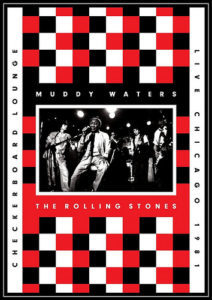
This is the latest installment in our weekly series, The Language of the Blues, in which author and rocker Debra Devi focuses on the meaning and significance of a unique word used in blues song. Come back every week for the latest! Devi’s The Language of the Blues: From Alcorub to ZuZu is now available at Bluescentric.com!
Not only words and music, but potent signs and symbols from Africa enrich American culture. The Ejagham people of southwestern Cameroon and southeastern Nigeria created an ideographic form of writing called nsibidi. These sacred signs designated the meeting places and plans of secret societies that governed the ethical and moral lives of Ejagham people.
These secret societies exercised real power. The members of the executioner society, for example, were men of the tribe who had been endowed by the king with the authority to hunt down and kill convicted murderers.
The checkerboard pattern was the symbol of the king’s leopard society, which was comprised of the king and his governing body. The checkerboard represented the spots of the king’s power animal, the leopard. Its grace, speed and fearsome strength made the leopard the perfect embodiment of royalty. The king was believed to have a leopard spirit that leapt into action when the king was in danger, carrying him away to safety.
Among African Americans, the checkerboard became the symbol for another masculine sanctuary–the corner bar. Like the fabled Checkerboard Lounge on the South Side of Chicago, opened by Buddy Guy and Junior Wells in 1972, many blues clubs and bars use the checkerboard name and symbol.
Song:
“Friar’s Point”- Susan Tedeschi and John Hambridge
VIDEO
“Country Boy” – Muddy Waters Live at the Checkerboard Lounge
“Friar’s Point” – Susan Tedeschi with Lightning Malcom and Victor Wainwright

